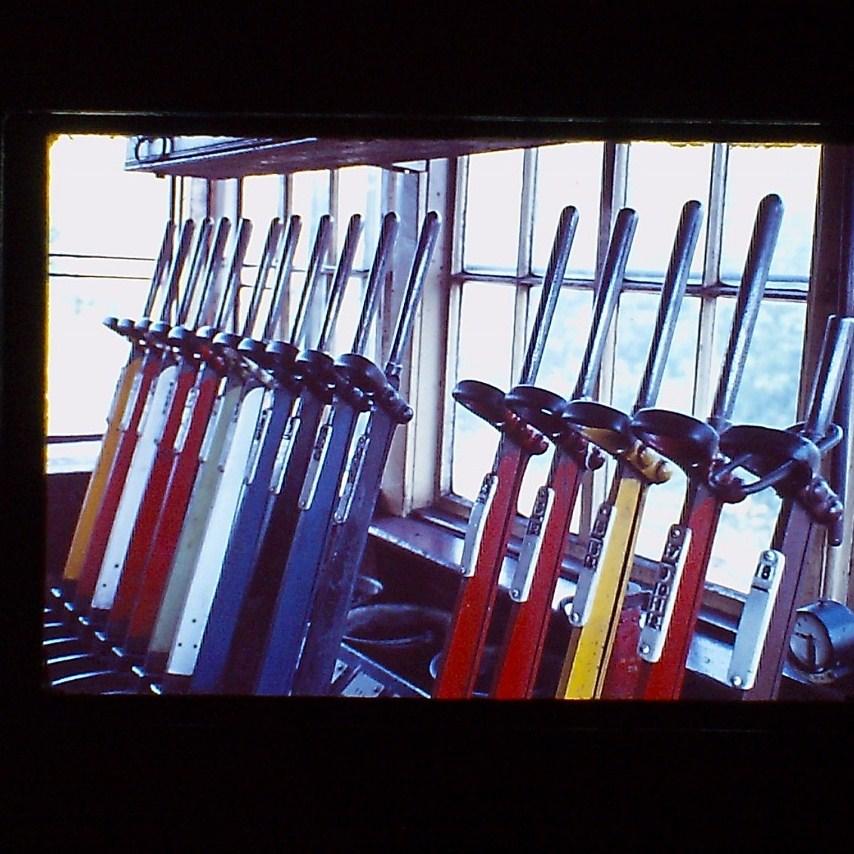Wigan Album
British Railways Wigan
9 Comments
Photo: Peter Worthington
Item #: 21743
Excellent photo once again Peter, I wouldn't imagine the Whelley railway had electric controlled signalling only the original semaphore signals. Did you work up to the closure of the line in the 70s.
Thanks Peter,
Just wondered what was lever 18 for? (the brown one)
I applied for and got the vacancy at Balshaw Lane Station signal-box in June of 1964 Colin; I left the railroad all together in late '65 or early '66. Went on long-distant haulage, tramping for just over three years for more than double the wage. - The no.18 Harry has something to do with the single line, I may not be exact in the description; it had to be used to obtain a token, and to get a token the train had to be accepted by Haigh and the road set, so it maybe locked the FP's and released the token. I know one couldn't be extracted without the road being set apart from using a hacksaw
Thanks Peter,
Regarding lever 18 it makes sense now (it must have been acting as an acceptance/direction lever for the single line to Haigh Jct).
I like to knowthe difference between home and distance signals? Aleays thought home signals meant a station?
Semaphore, painted red with white band across it and a square end, is a stop signal, when horizontal Drivers are not allowed to pass it. The stop signals are spaced out along the railway at safe distances, called sections or blocks. The distant, or warning signal is painted yellow, is shaped like a fish tail at the end, and has a black chevron to match the fish tail shape. The distant signal can be passed when in the horizontal position; when in this position it denotes the next signal is at stop.
Thank you for that. Last question: Why do some signals have red and yellow on the same post?
Sorry to ask, very interested!
Tony G: A part answer to your question/comment is shown on the pic. of the Ford Car Train at Whelley. The STOP signal (start and finish of section, or block) on the gantry is off for the train heading towards Standish box. This signal is mounted slightly higher than the STOP signal to left of picture, as this one is for the single line to Haigh box, and junction STOP signals are always mounted at different heights, the higher one always being the main line, and the lower one being a branch line. The WARNING or DISTANT signal on the gantry is positioned here because of the junction. For trains to branch line: If the STOP signal above the WARNING signal was in the UP position, the WARNING in horizontal position, the train could pass but would denote to the driver that the next signal would be at STOP, in this case Haigh Junction (a set of points). If both signals were up, the next signal would be off, but driver would have to slow down at Haigh, to hand in the token, it is all about keeping traffic moving.